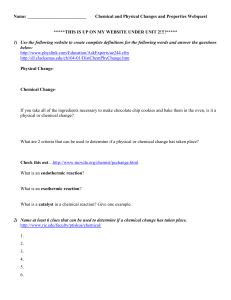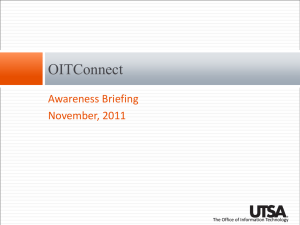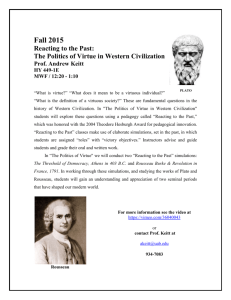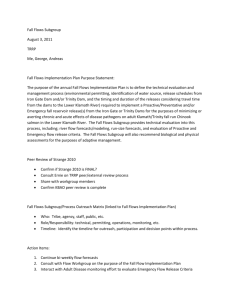cea12233-sup-0003-TableS1
advertisement
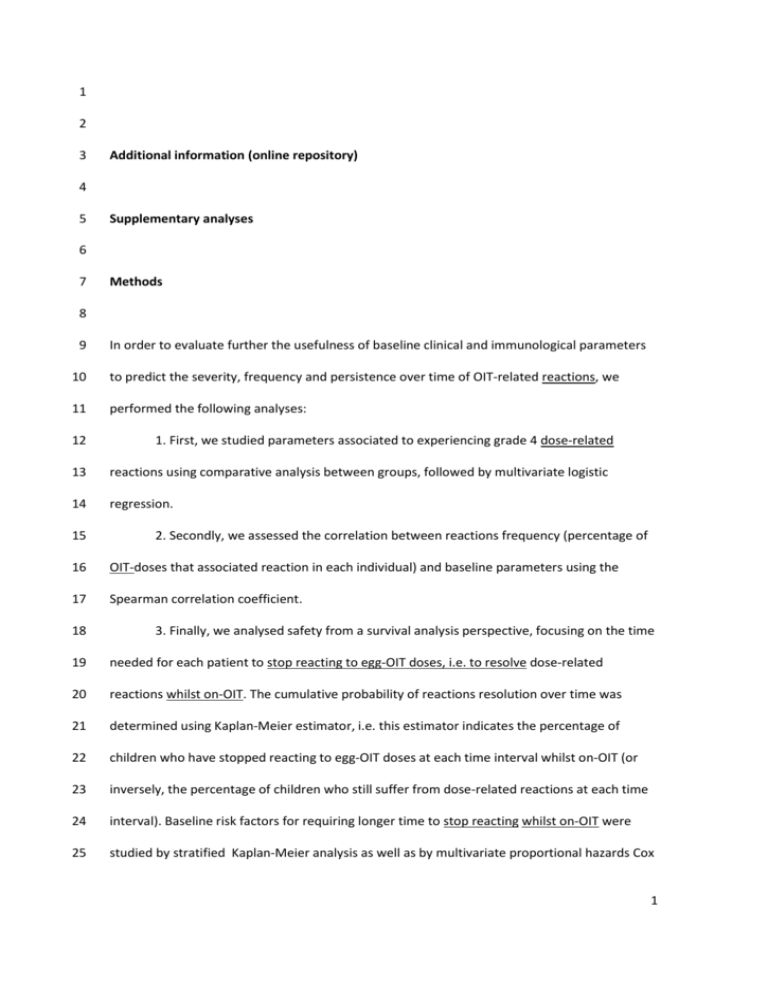
1 2 3 Additional information (online repository) 4 5 Supplementary analyses 6 7 Methods 8 9 In order to evaluate further the usefulness of baseline clinical and immunological parameters 10 to predict the severity, frequency and persistence over time of OIT-related reactions, we 11 performed the following analyses: 12 1. First, we studied parameters associated to experiencing grade 4 dose-related 13 reactions using comparative analysis between groups, followed by multivariate logistic 14 regression. 15 2. Secondly, we assessed the correlation between reactions frequency (percentage of 16 OIT-doses that associated reaction in each individual) and baseline parameters using the 17 Spearman correlation coefficient. 18 3. Finally, we analysed safety from a survival analysis perspective, focusing on the time 19 needed for each patient to stop reacting to egg-OIT doses, i.e. to resolve dose-related 20 reactions whilst on-OIT. The cumulative probability of reactions resolution over time was 21 determined using Kaplan-Meier estimator, i.e. this estimator indicates the percentage of 22 children who have stopped reacting to egg-OIT doses at each time interval whilst on-OIT (or 23 inversely, the percentage of children who still suffer from dose-related reactions at each time 24 interval). Baseline risk factors for requiring longer time to stop reacting whilst on-OIT were 25 studied by stratified Kaplan-Meier analysis as well as by multivariate proportional hazards Cox 1 1 regression model. The event of interest for survival analysis was defined as “reactions 2 resolution”, i.e. absence of further reactions during the whole period on-OIT since the last 3 reaction registered. Accordingly, children were classified on the final evaluation into two 4 categories to perform the survival analysis, as explained in the main manuscript: subgroups PR 5 (children with ongoing dose-related reactions over the whole period on-OIT) and RR (children 6 who stopped reacting to egg-OIT doses over time, being free of reactions for at least for the 7 last 4 months on-OIT). The time point when the last dose-related reaction had occurred was 8 registered as the moment when a given child of subgroup RR had stopped reacting to OIT- 9 doses. Children who discontinued OIT in maintenance phase due to ongoing reactions were 10 included in the survival analysis as subgroup PR. In contrast, children in subgroup ED were 11 classified separately and excluded from survival analysis due to their shorter time on egg-OIT. 12 13 14 Results 15 16 1. Factors associated to reactions severity 17 Children who experienced grade 4 OIT-related reactions (n=29), compared to children 18 who did not (n=21), had a higher rate of grade 4 reactions at DBPCFC (36.7% vs. 9.5%, 19 p=0.048), more severe forms of asthma (p=0.033), as well as higher EW-sIgE and OVM-sIgE 20 (10.95 and 8.59 kU/L vs. 3.43 and 2.28, p=0.047 and 0.021, respectively). No other differences 21 were found in clinical/immunological parameters between these two groups (data not shown). 22 Parameters found significant in univariate analysis were included in the multivariate logistic 23 regression model, which revealed that having a grade 4 reaction at DBPCFC was the only 24 independent predictor for experiencing grade 4 reactions during OIT (Odds ratio: 7.08 (CI 95%: 25 1.31-38.19), p=0.023). 2 1 2 2. Factors associated to reactions frequency 3 A moderate correlation was found between sIgE to EW, OVA and OVM and 4 reactions/doses per child (Rho Spearman: 0.559, 0.509 and 0.594, respectively, p<0.001). The 5 severity of reaction at DBPCFC showed also a low but significant correlation (0.391, p=0.005). 6 SPT and threshold dose at DBPCFC showed no correlation with reactions frequency (p>0.05). 7 8 3. Factors associated to reactions persistence 9 The cumulative probability of reactions resolution -i.e. the percentage of children who 10 had already stopped reacting to OIT-doses- was 25% after 6 months on OIT (95% CI: 3-9) and 11 50% after 13 months (95% CI: 7.3–18.8) (Fig.E1 in online repository). 12 Two parameters were identified as independent risk factors for requiring longer to 13 stop reacting to OIT-doses over time: EW-sIgE and grade 3-4 reaction at baseline DBPCFC 14 (hazard ratios: 1.16 for increases in 1 kU/L (95% CI: 1.05-1.27, p=0.002) and 4.4 (95% CI: 1.78– 15 10.87, p=0.01) respectively). Indeed, the severity of reaction at DBPCFC influenced the time 16 required to stop reacting to OIT-doses as follows: for severity grades 1-2 the cumulative 17 probability of reactions resolution was 50% at 6 months (CI 95%: 0-12.5), whereas for grades 3- 18 4 it was 50% at 16 months (CI 95%: 11.5-20.5, p=0.003) (Fig. E2 in the online repository). The 19 time needed to stop reacting was not influenced by other clinical/immunological parameters 20 (data not shown). 21 22 23 3 1 Table E1. Univariate logistic regression analysis, showing baseline risk factors for belonging 2 to subgroup RR (children who stop reacting to egg-OIT doses over time) as opposed to 3 subgroups PR (children with ongoing reactions over the whole period on-OIT) and ED 4 (children requiring early OIT discontinuation due to frequent reactions not improved by 5 medication or protocol re-adaptation). 1Those children who experience a grade 1-2 reaction 6 at baseline DBPCFC [20] have 4.65-times increased probability of belonging to subgroup RR in 7 comparison to those who experience a grade 3-4 reaction. 2The higher the baseline IgE levels, 8 the lower the probability of belonging to subgroup RR. 3Each increase in OVM-sIgE in 1 kU/L 9 involves 0.81-times reduced probability of belonging to subgroup RR. Inversely, each increase 10 in OVM-sIgE in 1 kU/L involves 1.23-times (1/0.81=1.23) increased probability of belonging to 11 subgroups PR or ED, whereas an increase in 10 kU/L involves 8.2-times (1.2310=8.2) increased 12 probability of belonging to PR or ED. 13 Univariate logistic regression Baseline parameter Reaction severity at DBPCFC (grades 1-2 vs 3-4) EW-sIgE (KU/L) 2 OVA-sIgE (KU/L) 2 OVM-sIgE (KU/L)2,3 Total IgE (kU/L) 2 Odds ratio 95% CI P value 4.65 1.23-17.1 0.024 0.79 0.67-0.92 0.003 0.69 0.54-0.88 0.003 0.81 0.69-0.94 0.005 0.99 0.98-0.99 0.044 1 14 15 16 17 4 1 Figures legends for online repository 2 3 Figure E1. Kaplan–Meier estimate of survival, which represents the percentage of children 4 who still suffer from dose-related reactions at each time interval whilst on oral 5 immunotherapy (OIT). 6 The event of interest is defined as “resolution of dose-related reactions”, i.e. absence of 7 further reactions over the whole period on-OIT since the last reaction registered. (n =41, 8 children in subgroup ED (who required discontinuation in induction phase due to frequent 9 reactions not improved by medication and protocol re-adaptation) were excluded due to their 10 shorter period on-OIT). 11 12 13 Figure E2. Kaplan–Meier estimate of survival, showing the percentage of children who still 14 suffer from dose-related reactions at each time interval whilst on-OIT, stratified by reactions 15 severity at baseline double-blind placebo-controlled food challenge (DBPCFC) [21]. The event 16 of interest is defined as “resolution of dose-related reactions”, i.e. absence of further reactions 17 over the whole period on oral immunotherapy (OIT) since the last reaction registered. (n =41, 18 children in subgroup ED (who required discontinuation in induction phase due to frequent 19 reactions not improved by medication and protocol re-adaptation) were excluded due to their 20 shorter period on-OIT). 21 5


